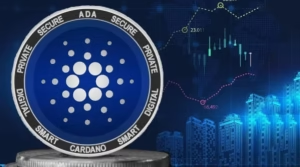Introduction to Cardano and Its Market Dynamics
Cardano Price is a blockchain platform that represents a significant advancement in terms of scalability, interoperability, and sustainability within the cryptocurrency ecosystem. Launched in 2017, it is developed using a research-driven approach and reflects a commitment to a scientifically validated methodology. At the heart of Cardano is its native cryptocurrency, ADA, which plays a crucial role in the network’s operations, governance, and incentivization structures.
One of the defining characteristics of Cardano is its utilization of a proof-of-stake consensus mechanism known as Ouroboros. Unlike traditional proof-of-work systems, which require substantial energy consumption, Ouroboros enables users to validate transactions as a reward for holding ADA, creating a more energy-efficient environment. This mechanism not only enhances the security of the network but also allows for increased scalability, which is essential for supporting a growing number of decentralized applications and smart contracts.
Smart contracts are another vital aspect of Cardano, allowing developers to create decentralized applications on its blockchain. This feature enables complex functionalities, such as automated transactions and various financial applications, making Cardano an attractive choice for developers and businesses looking to explore blockchain technology. The platform’s architecture is designed to ensure that upgrades and enhancements can occur without disrupting ongoing operations, thus providing stability and predictability.
Understanding Cardano price dynamics is crucial for potential investors and stakeholders, especially given the volatility that characterizes cryptocurrency markets. The price of ADA is influenced by various factors including market demand, technological advancements, regulatory developments, and macroeconomic trends. Engaging with these dynamics can provide insights into potential investment opportunities and risks, setting the groundwork for a more detailed discussion on Cardano price trends and its market behaviors.
Historical Trends in Cardano Price
The historical price trajectory of Cardano, a prominent cryptocurrency, has experienced numerous fluctuations influenced by a variety of factors. Since its launch in 2017, Cardano’s price has seen periods of significant volatility, with notable peaks and troughs that reflect broader market dynamics and specific developments within the Cardano ecosystem.
Initially, Cardano’s price remained relatively low, oscillating around a few cents. However, as awareness of cryptocurrency grew and technological advancements were introduced, the Cardano price witnessed a notable surge reaching over $1 by early 2018. This was primarily fueled by rising cryptocurrency market enthusiasm and investor speculation. Notably, it peaked at around $1.33 in January 2018 before experiencing a substantial downturn, mirroring broader market conditions where many cryptocurrencies faced abrupt declines.
Throughout 2020 and 2021, the price of Cardano surged significantly, driven by the launch of several key upgrades. The introduction of the Alonzo upgrade in September 2021, which enabled smart contracts on the network, was pivotal, propelling Cardano’s price to an all-time high near $3. This event was closely followed by increased market interest and a broader acceptance of decentralized finance (DeFi) platforms.
However, the price of Cardano is also sensitive to external factors, including regulatory changes and macroeconomic indicators. For instance, during market corrections, Cardano’s price tended to mirror Bitcoin trends, revealing the interconnectedness of the cryptocurrency ecosystem. Legal regulations, particularly concerning cryptocurrencies, have also led to noticeable impacts on Cardano price, often causing temporary spikes or declines as sentiments shift in response to news.
Analyzing these historical trends provides essential insights into the underlying patterns related to Cardano’s price fluctuations, enabling investors and enthusiasts to make more informed assessments about future potential and market position.

Factors Influencing Cardano Price Today
The price of Cardano, like many cryptocurrencies, is influenced by a variety of internal and external factors that contribute to its valuation. Internally, developments within the Cardano ecosystem play a significant role. The ongoing upgrades to its blockchain technology, such as improvements in scalability and security, can enhance Cardano’s utility and subsequently contribute to an increase in its price. Additionally, partnerships formed with other organizations or projects can bolster confidence among investors and users alike, positively impacting the Cardano price.
Community engagement also serves as a crucial factor in defining Cardano’s value. The active participation of developers, investors, and users in the Cardano community fosters a sense of loyalty and optimism, which can lead to increased demand for the cryptocurrency. When communities rally behind initiatives or developments, it often translates into price surges as more individuals seek to partake in the ecosystem.
On the external front, several broader market trends affect Cardano’s price. The overall performance of the cryptocurrency market, including the rise and fall of Bitcoin and Ethereum, can lead to fluctuations in Cardano’s valuation. As a competitive player in the field of blockchain technology, any advancements or setbacks from rival cryptocurrencies can exert similar influences on Cardano’s market price. Furthermore, regulatory impacts have garnered significant attention; legislative actions and governmental scrutiny can lead to substantial price volatility. The sentiment within the market, influenced by news coverage or social media trends, also plays a crucial role in driving Cardano’s price dynamics.
Understanding the interplay of these factors is vital for individuals looking to navigate the current pricing landscape of Cardano. The confluence of internal advancements and external pressures shapes the overall perception and valuation of Cardano in the ever-evolving cryptocurrency market.
Future Predictions for Cardano Price
As the cryptocurrency landscape continues to evolve, expert predictions regarding Cardano price are garnering significant attention. Analysts are closely monitoring various factors that could influence the price trajectory of Cardano, considering its unique technological foundations and adoption strategies. Historical data indicates a pattern where certain technological advancements within the Cardano network have led to significant surges in its price. Market analysts suggest that future upgrades, such as the introduction of new features and enhancements, will play a crucial role in shaping Cardano’s price in the coming years.
In addition to technological improvements, adoption rates are another critical factor influencing the Cardano price. As more developers and enterprises recognize the benefits of the Cardano platform for decentralized applications and smart contracts, demand for the associated ADA token may increase. This demand can have a direct positive effect on Cardano’s market valuation. Furthermore, the cryptocurrency market’s overall trend—whether bullish or bearish—can strongly impact Cardano; alignment with broader market movements often determines price fluctuations.
Predictive models based on machine learning and historical price movements are also being employed to forecast potential price levels for Cardano. These models often take into account market sentiment, trading volumes, and other variables. However, while they can provide insights, the inherent volatility of the cryptocurrency market means predictions must be treated cautiously. Investors should focus on cultivating informed decision-making strategies that consider both short-term opportunities and long-term trends within the Cardano ecosystem.
In conclusion, while the future predictions for Cardano’s price hold promise, understanding the intricacies of market dynamics is essential for navigating its price movements effectively. By staying informed on technological developments and adoption trends, investors can better position themselves in this rapidly evolving market.




Leave a Reply